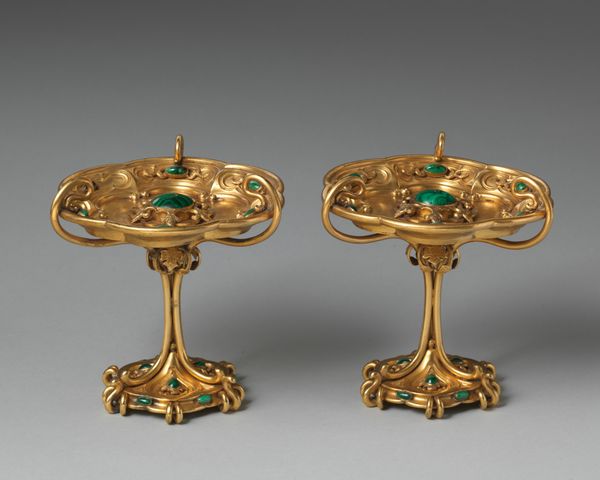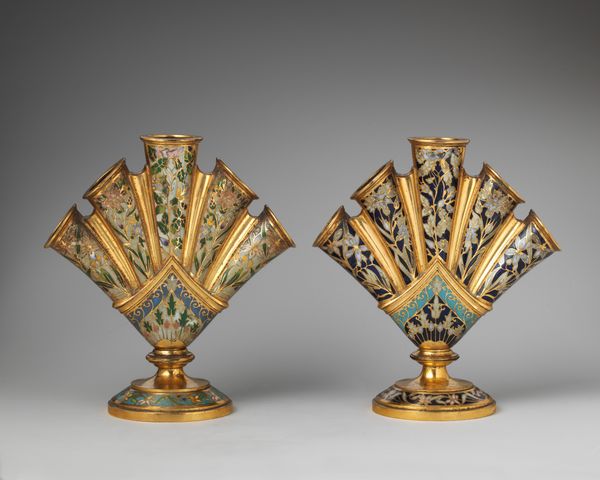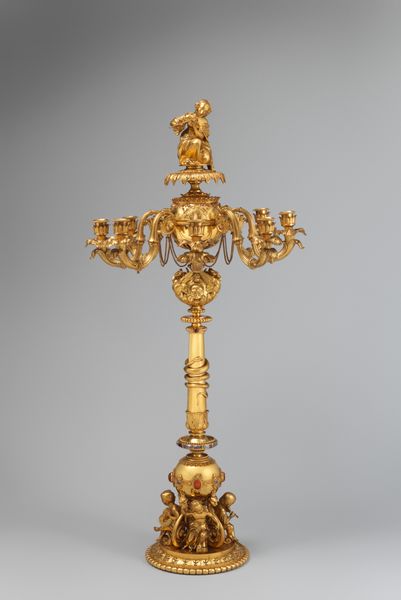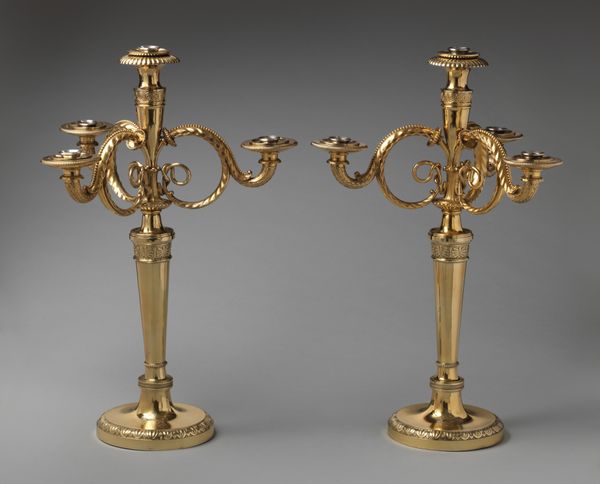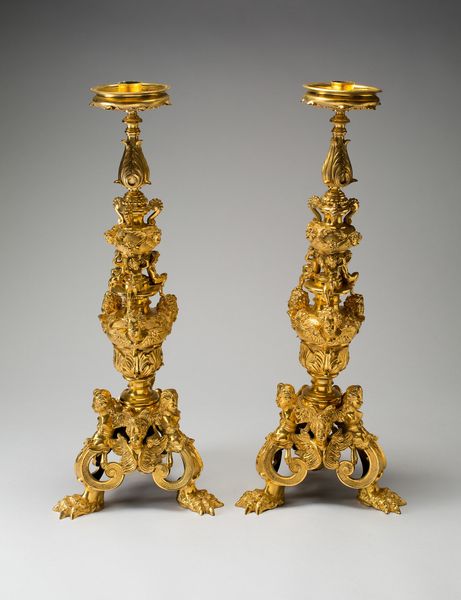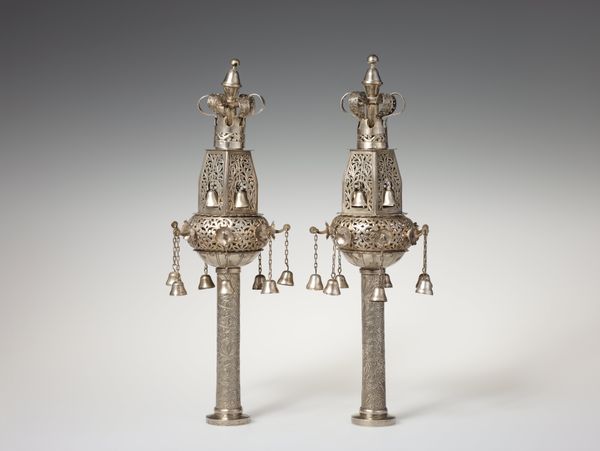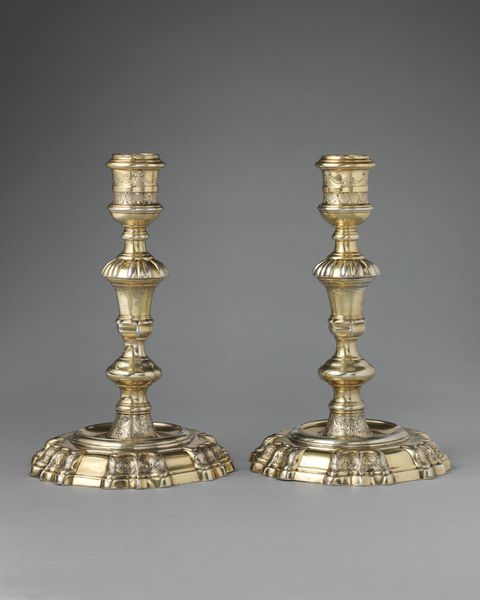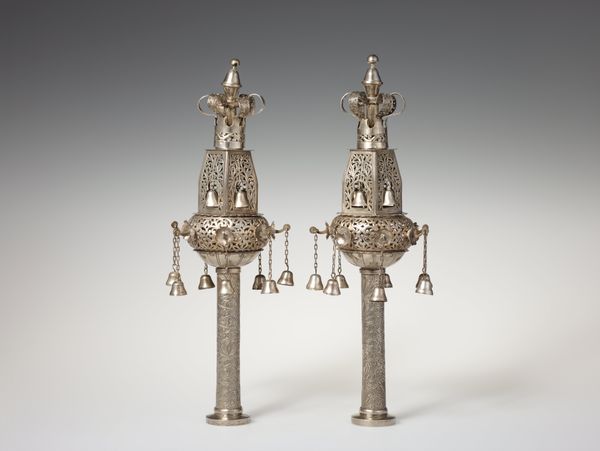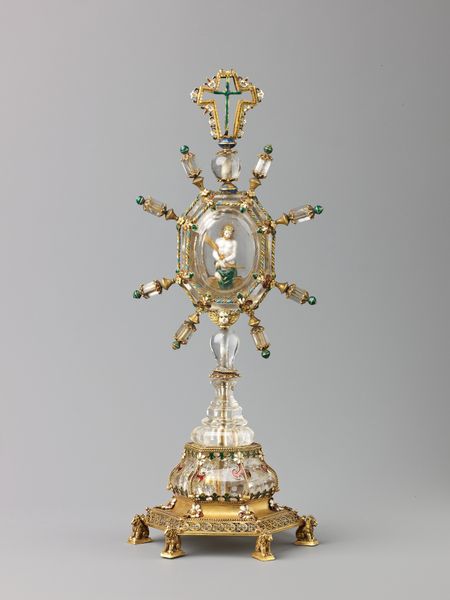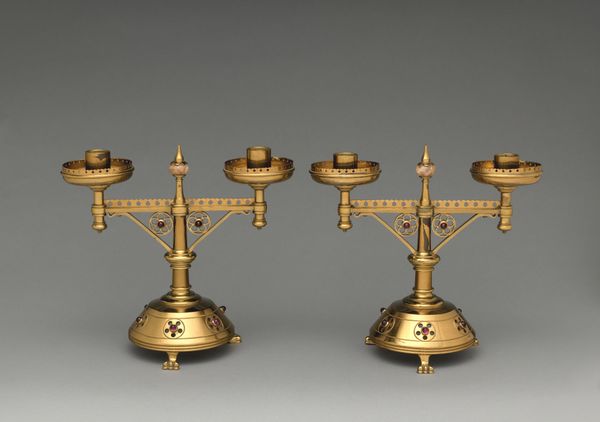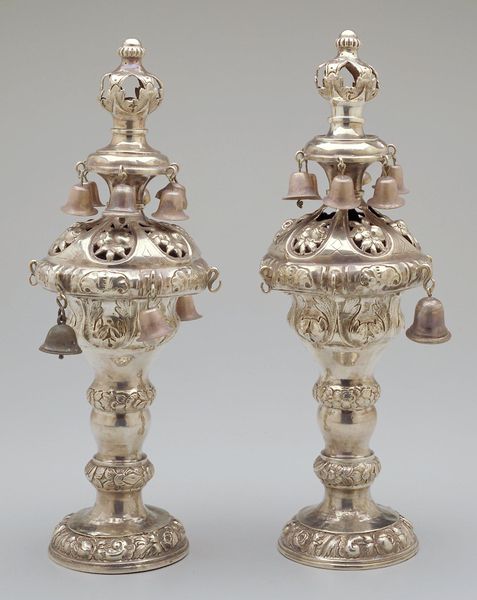
Dimensions: Overall (each, confirmed): 22 3/8 × 13 1/4 × 6 3/8 in. (56.8 × 33.7 × 16.2 cm)
Copyright: Public Domain
These candelabra were made by Ferdinand Barbedienne, and they’re a testament to the nineteenth-century fascination with the medieval period. The main material here is bronze, which has been gilded. But what really catches the eye is the enamel work, especially the turquoise color, which gives them such vibrancy. Now, bronze is an interesting material. It is an alloy of copper and tin, so it can be cast into very intricate forms. If you look closely, you'll see just how elaborate the detailing is here. Consider also the enameling, which involves fusing powdered glass onto the metal surface. These are painstaking, labor-intensive processes, requiring immense skill. Barbedienne was one of the most successful and sought-after *ébénistes*, or bronze manufacturers, in Paris at the time, and was known for the high-quality of his metalwork. His workshop was like a factory, employing many skilled artisans and producing luxury objects. He used industrial means of production to create his pieces, which allowed him to produce objects such as these candelabras in large numbers. This piece really underscores the importance of thinking about how things are made, and how processes can embed social value into objects. It challenges the conventional boundaries that we draw between art, design, and craft.
Comments
No comments
Be the first to comment and join the conversation on the ultimate creative platform.

